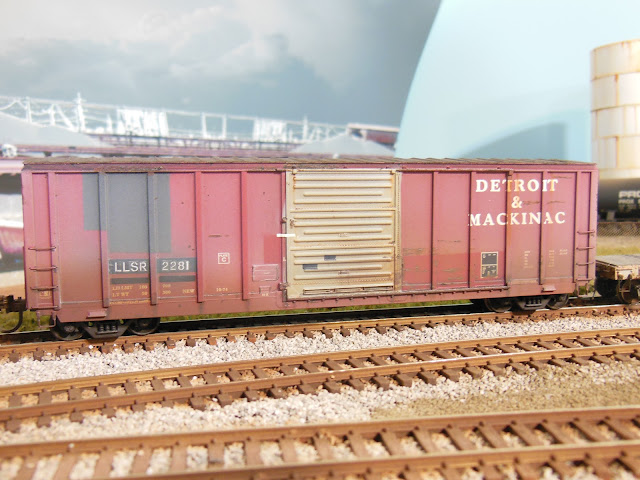I've checked the list of reporting marks on rrpicturearcjives.net, and going by the reporting marks listed on that site, the LLSR reporting marks that I used on this boxcar are fictional. Here's the (slightly embellished) story behind their use on this freight car...
While I was in the train room one evening, my adoring wife (that's right, I'm adorable) wandered into the train room, and after looking around for a few moments, she asked me how come I'd never painted a freight car for her (and that's when the fight started).
So, to make a long story short, the LLS part of the reporting marks on this boxcar are her initials. I used the "R" letter because there were no "X's" left on the decal sheet. I believe this to be the first (and maybe the last) LLSR boxcar anywhere.
LLSR 2281 all finished up and rolling along on the JSSX.
And here's a couple of views of the covered hopper loading conveyor that I've been working away at for the last little while. I've got it positioned the layout now, still just test fitting the scene.
I still have scenery to put in to blend the scene together with the existing track spur. This "industry" will be able to accept one or maybe two covered hoppers at a time.






Nice job on the conveyor project. I was wondering how they fed the electrical power to the conveyor? Also in some earlier photos it looked like there is an overhead safety line for the employees to attach a fall restraint harness line to. Will you be adding one as well?
ReplyDeleteHI Ken...Thanks for looking in. I believe that a cable would be run from a small shed to the conveyor to power it. I have a shed ready, and I have an idea for a fall arrest cable, although due to the space available, I may have it strung from the former REA building on the other side of the track.
ReplyDeleteJim
Conveyor belts of today are far more advanced than when they first came around in the 17th century. From that time right up until today they have become an invaluable piece of machinery for transporting different materials in a variety of industries. cinta de rodillos
ReplyDelete